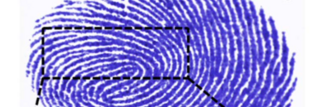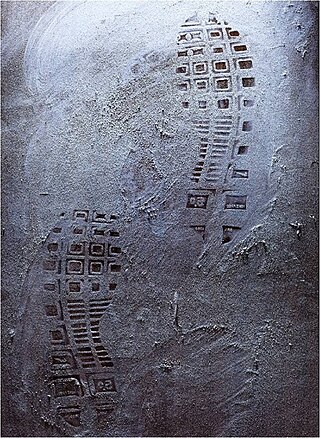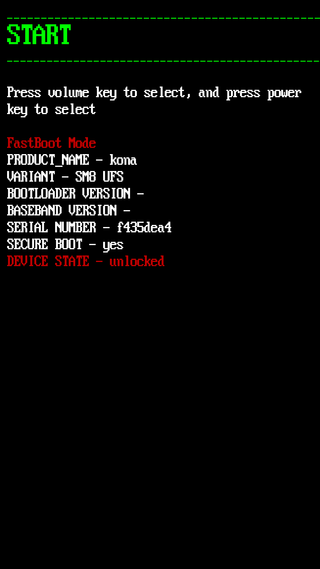Forensics is the application of science to criminal and civil laws.
It may also refer to:
Forensics is the application of science to criminal and civil laws.
It may also refer to:

Forensic science, also known as criminalistics, is the application of science principles and methods to support legal decision-making in matters of criminal and civil law.

Forensic pathology is pathology that focuses on determining the cause of death by examining a corpse. A post mortem examination is performed by a medical examiner or forensic pathologist, usually during the investigation of criminal law cases and civil law cases in some jurisdictions. Coroners and medical examiners are also frequently asked to confirm the identity of remains.

Silent Witness is a British crime drama television series produced by the BBC that focuses on a team of forensic pathology experts and their investigations into various crimes. First broadcast in 1996, the series was created by Nigel McCrery, a former murder squad detective based in Nottingham. Twenty-seven series of Silent Witness have been broadcast since 1996, with series 28 starting to air in January 2025.
HI or Hi may refer to:

In a jury trial, the Chewbacca defense is a legal strategy in which a criminal defense lawyer tries to confuse the jury rather than refute the case of the prosecutor. It is an intentional distraction or obfuscation. As a Chewbacca defense distracts and misleads, it is an example of a red herring. It is also an example of an irrelevant conclusion, a type of informal fallacy in which one making an argument fails to address the issue in question. Often an opposing counsel can legally object to such arguments by declaring them irrelevant, character evidence, or argumentative.

Forensic anthropology is the application of the anatomical science of anthropology and its various subfields, including forensic archaeology and forensic taphonomy, in a legal setting. A forensic anthropologist can assist in the identification of deceased individuals whose remains are decomposed, burned, mutilated or otherwise unrecognizable, as might happen in a plane crash. Forensic anthropologists are also instrumental in the investigation and documentation of genocide and mass graves. Along with forensic pathologists, forensic dentists, and homicide investigators, forensic anthropologists commonly testify in court as expert witnesses. Using physical markers present on a skeleton, a forensic anthropologist can potentially determine a person's age, sex, stature, and race. In addition to identifying physical characteristics of the individual, forensic anthropologists can use skeletal abnormalities to potentially determine cause of death, past trauma such as broken bones or medical procedures, as well as diseases such as bone cancer.
Volatility or volatile may refer to:

In forensic science, questioned document examination (QDE) is the examination of documents potentially disputed in a court of law. Its primary purpose is to provide evidence about a suspicious or questionable document using scientific processes and methods. Evidence might include alterations, the chain of possession, damage to the document, forgery, origin, authenticity, or other questions that come up when a document is challenged in court.
Forensic psychology is the application of scientific knowledge and methods to assist in answering legal questions that may arise in criminal, civil, contractual, or other judicial proceedings. Forensic psychology includes research on various psychology-law topics, such as: jury selection, reducing systemic racism in criminal law, eyewitness testimony, evaluating competency to stand trial, or assessing military veterans for service-connected disability compensation. The American Psychological Association's Specialty Guidelines for Forensic Psychologists reference several psychology sub-disciplines, such as: social, clinical, experimental, counseling, and neuropsychology.
Identification or identify may refer to:

Forensic linguistics, legal linguistics, or language and the law is the application of linguistic knowledge, methods, and insights to the forensic context of law, language, crime investigation, trial, and judicial procedure. It is a branch of applied linguistics.

Forensic psychiatry is a subspeciality of psychiatry and is related to criminology. It encompasses the interface between law and psychiatry. According to the American Academy of Psychiatry and the Law, it is defined as "a subspecialty of psychiatry in which scientific and clinical expertise is applied in legal contexts involving civil, criminal, correctional, regulatory, or legislative matters, and in specialized clinical consultations in areas such as risk assessment or employment." A forensic psychiatrist provides services – such as determination of competency to stand trial – to a court of law to facilitate the adjudicative process and provide treatment, such as medications and psychotherapy, to criminals.

Forensic toxicology is a multidisciplinary field that combines the principles of toxicology with expertise in disciplines such as analytical chemistry, pharmacology and clinical chemistry to aid medical or legal investigation of death, poisoning, and drug use. The paramount focus for forensic toxicology is not the legal implications of the toxicological investigation or the methodologies employed, but rather the acquisition and accurate interpretation of results. Toxicological analyses can encompass a wide array of samples. In the course of an investigation, a forensic toxicologist must consider the context of an investigation, in particular any physical symptoms recorded, and any evidence collected at a crime scene that may narrow the search, such as pill bottles, powders, trace residue, and any available chemicals. Armed with this contextual information and samples to examine, the forensic toxicologist is tasked with identifying the specific toxic substances present, quantifying their concentrations, and assessing their likely impact on the individual involved.

Trace evidence occurs when objects make contact, and material is transferred. This type of evidence is usually not visible to the naked eye and requires specific tools and techniques to be located and obtained. Due to this, trace evidence is often overlooked, and investigators must be trained to detect it. When it comes to an investigation trace evidence can come in many different forms and is found in a wide variety of cases. This evidence can link a victim to suspects and a victim or suspect to the crime scene.
Profiling, the extrapolation of information about something, based on known qualities, may refer specifically to:
Investigation or Investigations may refer to:

Forensic photography may refer to the visual documentation of different aspects that can be found at a crime scene. It may include the documentation of the crime scene, or physical evidence that is either found at a crime scene or already processed in a laboratory. Forensic photography differs from other variations of photography because crime scene photographers usually have a very specific purpose for capturing each image. As a result, the quality of forensic documentation may determine the result of an investigation; in the absence of good documentation, investigators may find it impossible to conclude what did or did not happen.
Acquisition may refer to:

Fastboot is a communication protocol used primarily with Android devices. It is implemented in a command-line interface tool of the same name and as a mode of the bootloader of Android devices. The tool is included with the Android SDK package and used primarily to modify the flash filesystem via a USB connection from a host computer. It requires that the device be started in Fastboot mode. If the mode is enabled, it will accept a specific set of commands, sent through USB bulk transfers. Fastboot on some devices allows unlocking the bootloader, and subsequently, enables installing custom recovery image and custom ROM on the device. Fastboot does not require USB debugging to be enabled on the device. To use fastboot, a specific combination of keys must be held during boot.
Pakkiriswamy Chandra Sekharan was an Indian forensic expert, writer and a former director of the Department of Forensics Sciences of the Government of Tamil Nadu. He was best known for his contributions in the investigations in the Rajiv Gandhi assassination case.